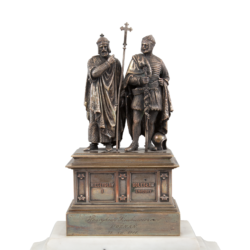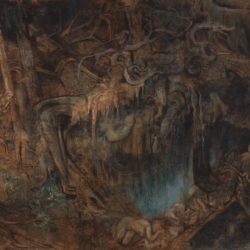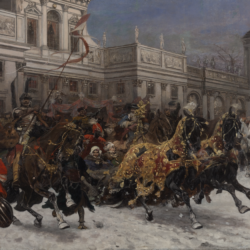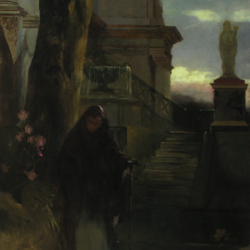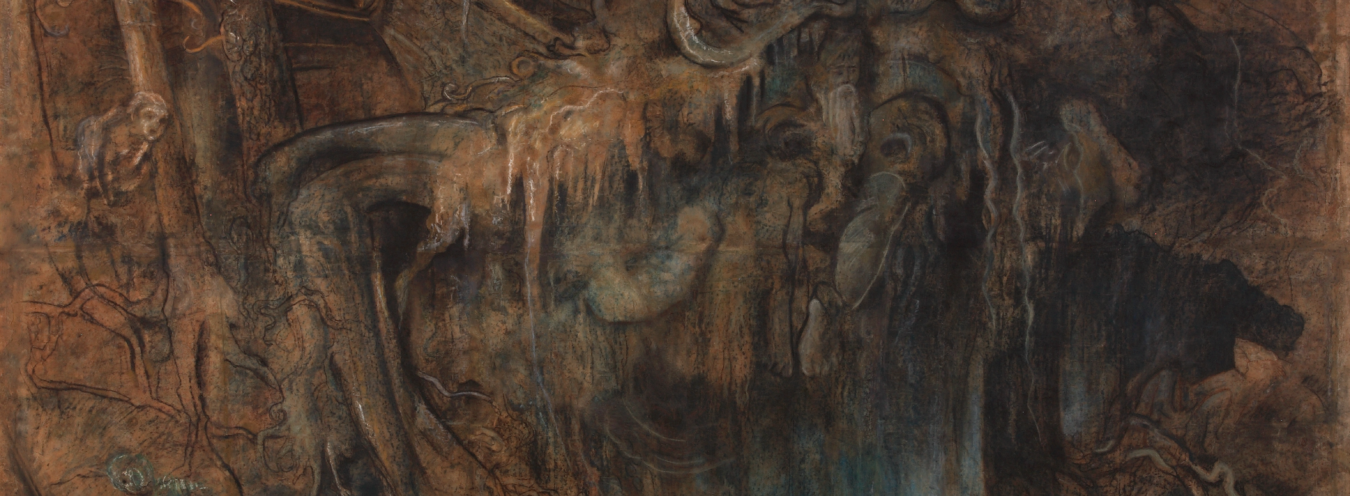
Naruralis Abandoned. The Dionysian Aesthetic Effect
Just like the contemporaneous critics, all literary historians who have discussed Sienkiewicz agree that not only was he an exceptionally gifted stylist but also a discerning observer of the life around him. Many interesting and insightful studies have been devoted to the way he designed his characters, but it would be compelling to approach this topic from the perspective of the peculiar “philosophy of man” developed in political theology. In this light, the “human nature” (the concept criticized by Scientists but accepted by conservative thinkers) could be seen as changing in time, yet essentially based on eschatological premises and focused on the meaning of human existence.
One of the examples that illustrate this changeability can be found in the atrophy of the psyche as the “sensorium of transcendence” that Voegelin diagnoses to progress with advancing modernity, even up to the point of making people unable to experience anything beyond the physical level. However, since the concept of order and the coherence of the cultural sign system requires the human factor to be represented in the immanent order one way or another, Voegelin’s historical analysis indicates the gradually emerging phenomenon referred to by him as “the deification of the animal basis of [man’s] existence.”[1]
It all boils down to the increasing cultural focus – and the psychological focus of individual human souls – on the real, material life and its many expressions. As regards cultural development, this process (seen by political theologians as a turning point in the relations between the human and the sacred) could lead directly to, among others, Naturalism in art and literature; and it was this movement, particularly its Zolaesque style, that Sienkiewicz vehemently opposed. There is no coincidence, then, that the writer’s reaction against Naturalism was a breakthrough step in his literary evolution towards the historical novel, as noted by Bujnicki, who argues that Sienkiewicz replaced:
associative structures and the autonomization of images with precise motivational dependencies; the narrative rule of depersonalization – with narrative roles within the realm of the narrator-as-author’s omniscience; excessive attachment to detail and confined spaces – with well-developed storytelling and vast spatial expanses; the everyday and the authentic – with the epic, full of meaning and rich in lofty thought; the abasement of the character – with his heroism; the pathology and biologically-determined destiny – with endorsement of “normality,” aesthetic quality, psychological motivation.[2]
Such an idiosyncratic response to Naturalism proves the writer’s accurate intuition – both esthetic and ethical – even with his irresolution in choosing the paradigm to follow.
Voegelin discusses yet another aspect to the “sacralization of bios”: the Dionysian myth. Of course, it existed and was drawn upon long before Friedrich Nietzsche’s antithesis between Dionysus and Christ. The concept was defined by Anne-Robert Turgot, one of the precursors of the Enlightenment:
Of what concern can it be to a man, who lives and dies in his finite present, whether mankind has progressed in the past or will progress in the future […]? Turgot’s answer is the masse totale. The triumphant brutality of the answer is unsurpassable. History has no meaning for man. What does it matter? It has meaning for the masse totale. […] Since concrete man cannot be the subject for whom history has a meaning, the subject has to be changed – man is replaced by the masse totale.[3]
The author of the Trilogy reveals his peculiar, perhaps deliberately concealed fascination with the Dionysian quality (represented in, for example, amorphous and anonymous masses of people) mainly on the aesthetic level of his novels, as a component of descriptive rhetoric. It is easy to guess that it mostly informs the discourse and imagery of battle scenes. A characteristic example of turning an individual into part of the “anonymous mass” (that nonetheless has the will to survive the fight at all costs) can be found in Sienkiewicz’s novella entitled “Bartek the Conqueror”:
Meanwhile the train has stopped at the station. In all the windows are visible uniforms, and caps with red bands. The troops are apparently as numerous as ants. […] A certain power and might is beating from that train, the end of which is not to be seen. […] But now the soldiers are separated from the crowd; they are already a dark, dense mass which forms into squares and rectangles, and begins to move with the regularity and precision of a machine.[4]
The above excerpt illustrates the aestheticization of a Dionysian image, though it must be added that this is achieved in the novella mainly through the stark contrast with the tropes of home, the protagonist’s true homeland, and family values.
Przypisy
- See E. Voegelin, op.cit., p. 12.
- T. Bujnicki, “Naturalizm a powieść historyczna” [Naturalism vs. the historical novel], in Problemy literatury polskiej okresu pozytywizmu [Questions in Polish positivist literature], series 2, edited by E. Jankowski and J. Kulczycka-Saloni, Wrocław 1983, pp. 109–110; trans. J. M.
- E. Voegelin, op.cit., pp. 93–94.
- H. Sienkiewicz, “Bartek the Conqueror,” Yanko the Musician and Other Stories, translated by J. Curtin, Boston 1893, pp. 162–163.

